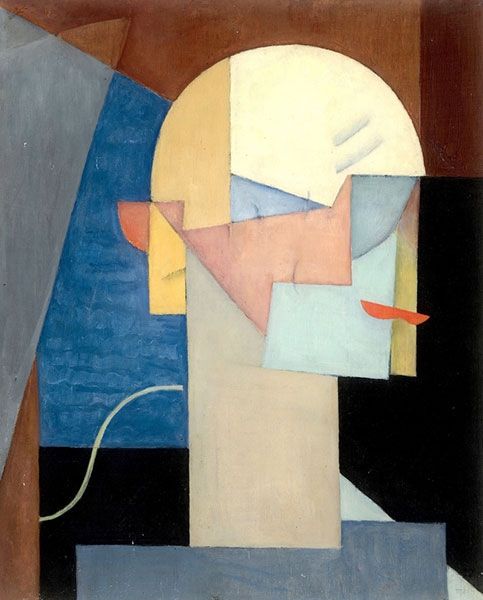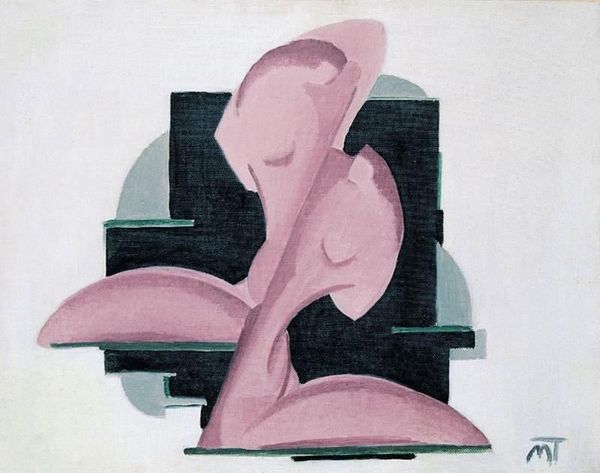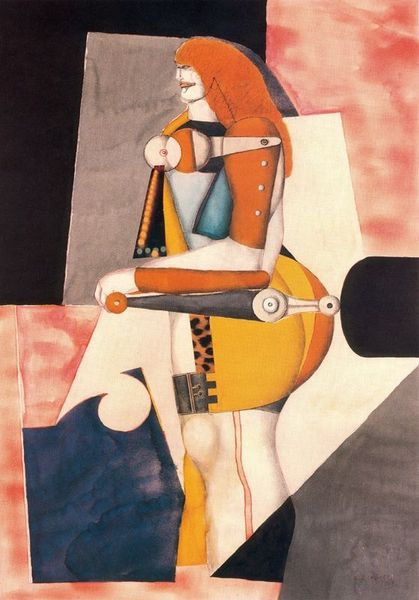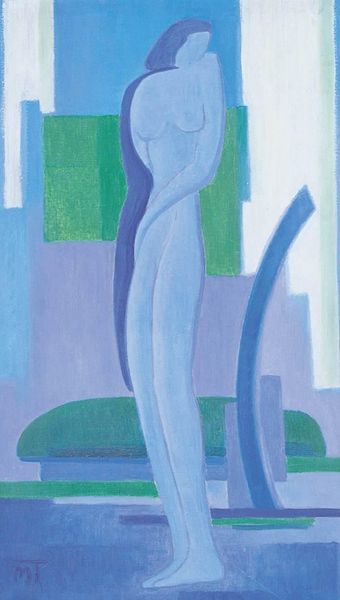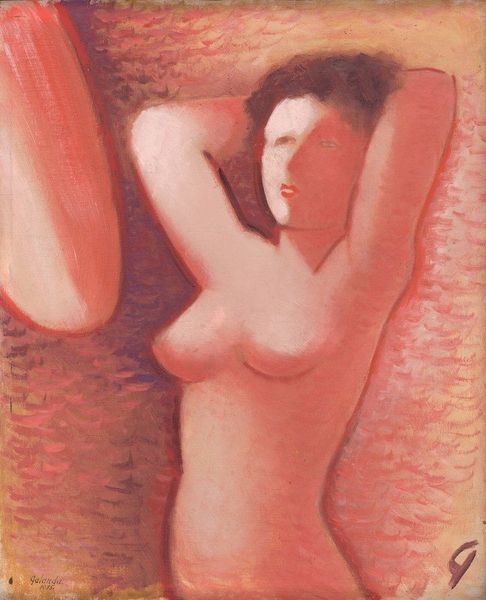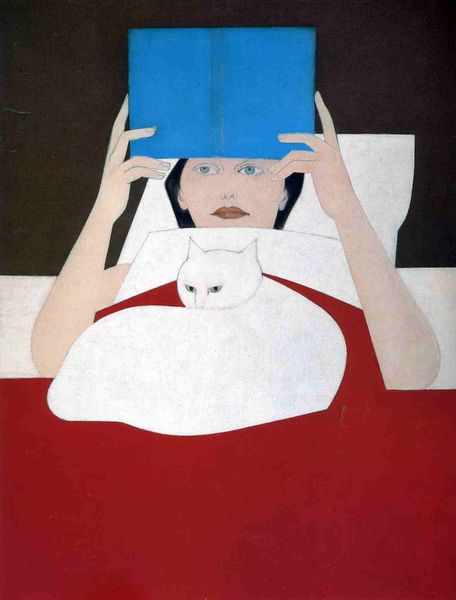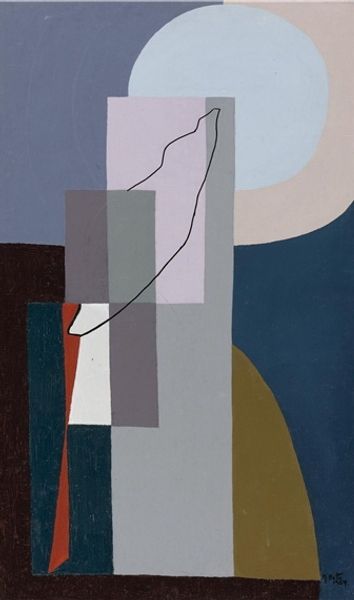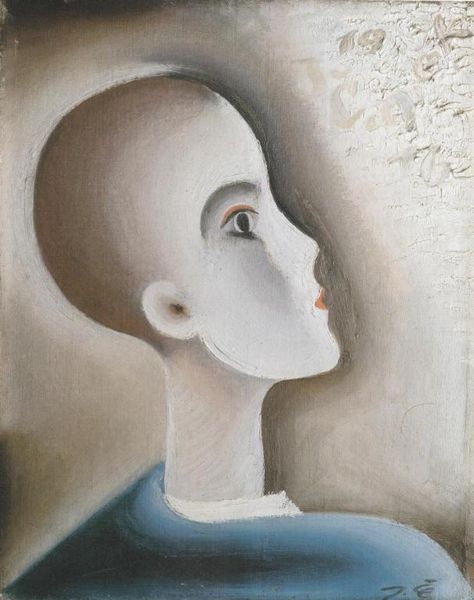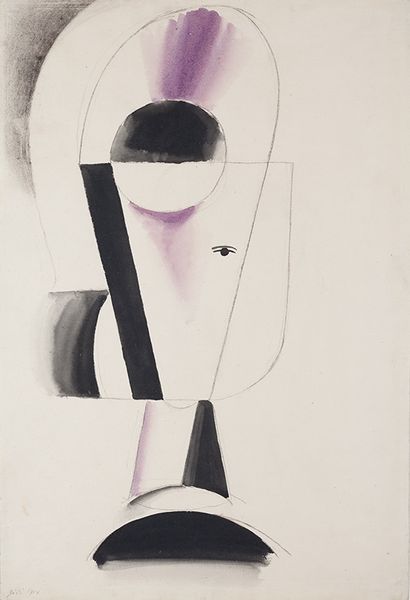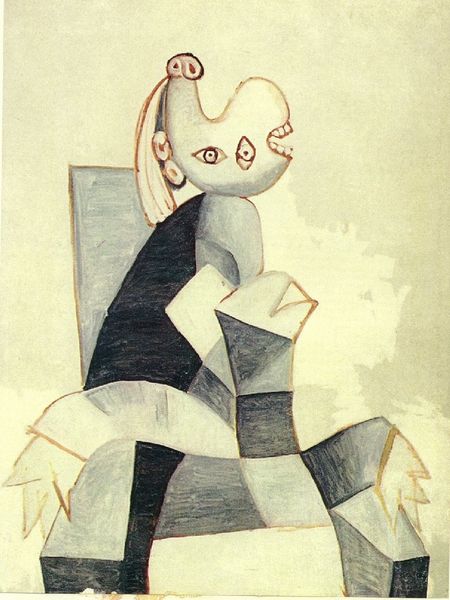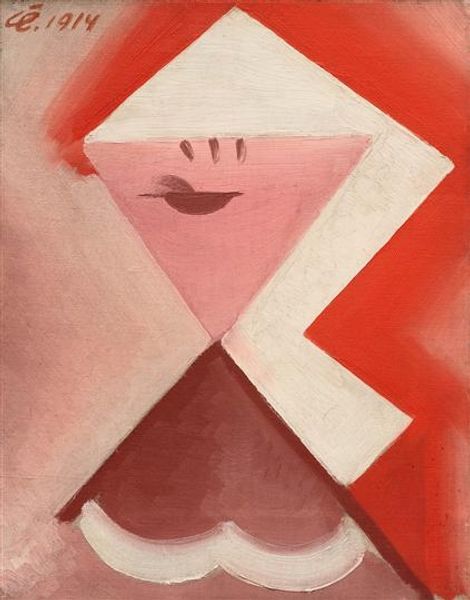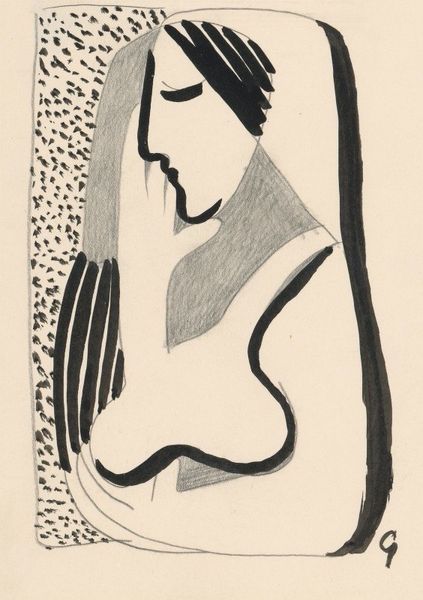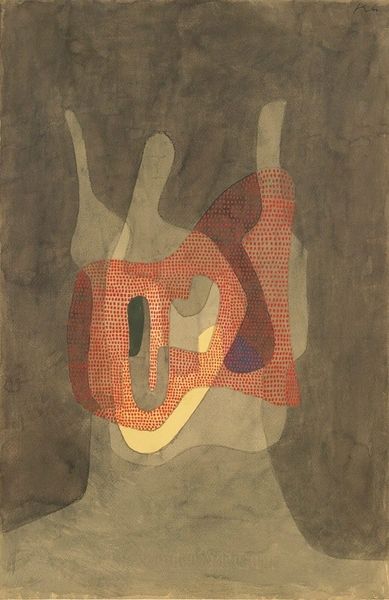
pastel
#
portrait
#
cubism
#
art-nouveau
#
figuration
#
pastel
Copyright: Public domain
Curator: Josef Capek’s pastel on paper artwork from 1916, "Děvče v koŠili," offers an intriguing take on portraiture. Editor: My first thought? Restrained elegance. The soft lilac hues and the economy of line—there's almost a monastic quality to the composition despite the clear nod to art nouveau. Curator: Indeed. Capek distills the essence of the subject down to geometric forms and subtle color gradations, aligning him with Cubist principles but always filtered through an unique sensibility. He blends modern modes with the sensibility and nostalgia of past artistic ages. What do you read in it? Editor: I see a very tactile approach, surprisingly so for something labeled Cubist. Look at the texture—you can almost feel the powdery softness of the pastel on what seems like coarse paper. I am more keen on understanding what dictated Capek's choice of materials, what led him to pastel over more traditional painting. Was there scarcity? Accessibility? A material inclination? Curator: The pale hues certainly enhance the psychological depth. There’s a dreamlike quality; the reduction of form pulls it away from pure representation into something symbolic. Her downward glance adds an air of introspection and interiority, especially when so much else has been removed. It’s a memory more than a portrait, perhaps. Editor: Perhaps. I think about labor and class, and what Capek may be subtly commenting on about representation. While "high art" favors oil and bronze, were more modest media the province of the less privileged or simply deemed less important, of another order of art? We are still trying to establish criteria by which to consider and value creative and material outputs... Curator: It is a hauntingly beautiful and complex portrait, open to many layers of reading and interpretation. Editor: Indeed. And perhaps what strikes me most is not what we see, but what Capek has intentionally withheld, prompting a discussion about what elements signify "art," who assigns that significance, and by what right?
Comments
No comments
Be the first to comment and join the conversation on the ultimate creative platform.

